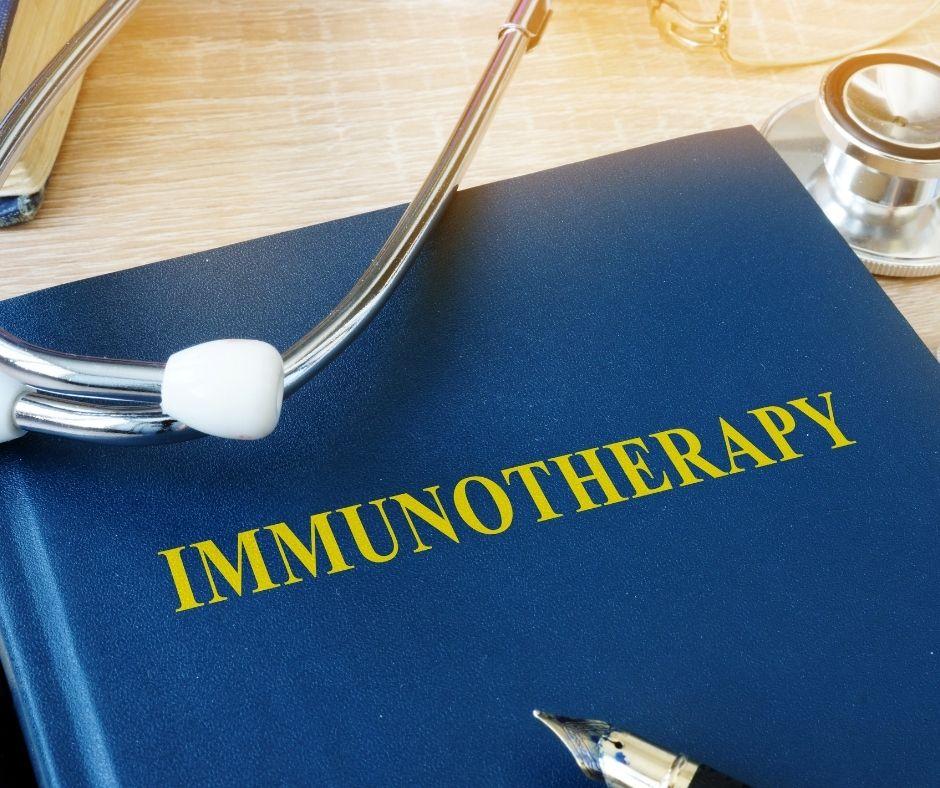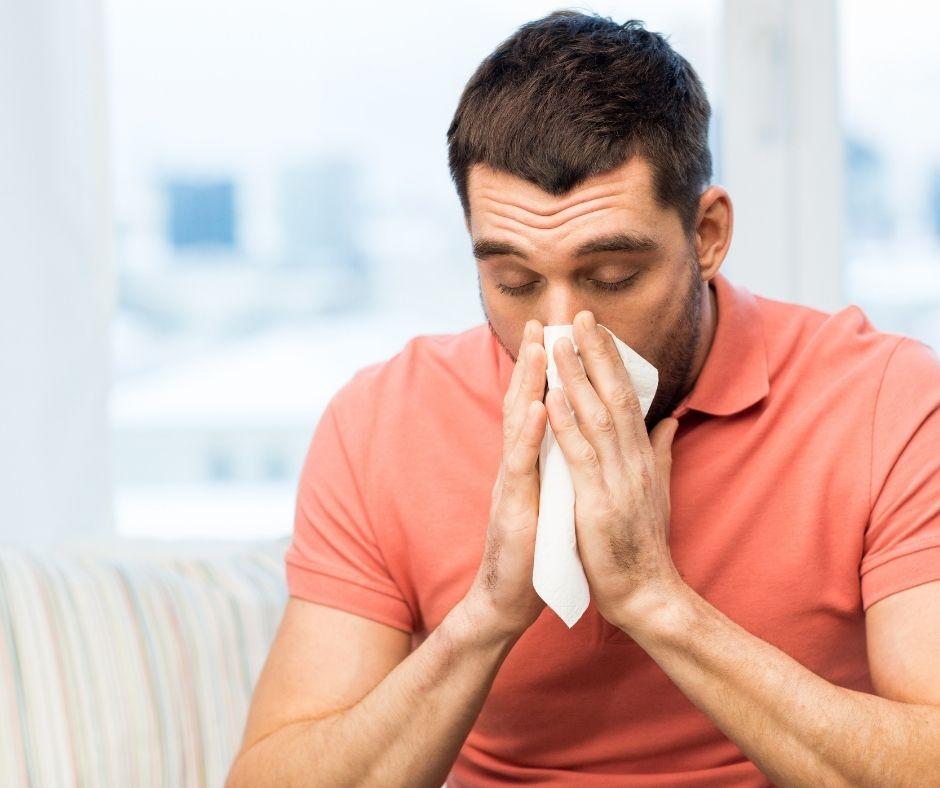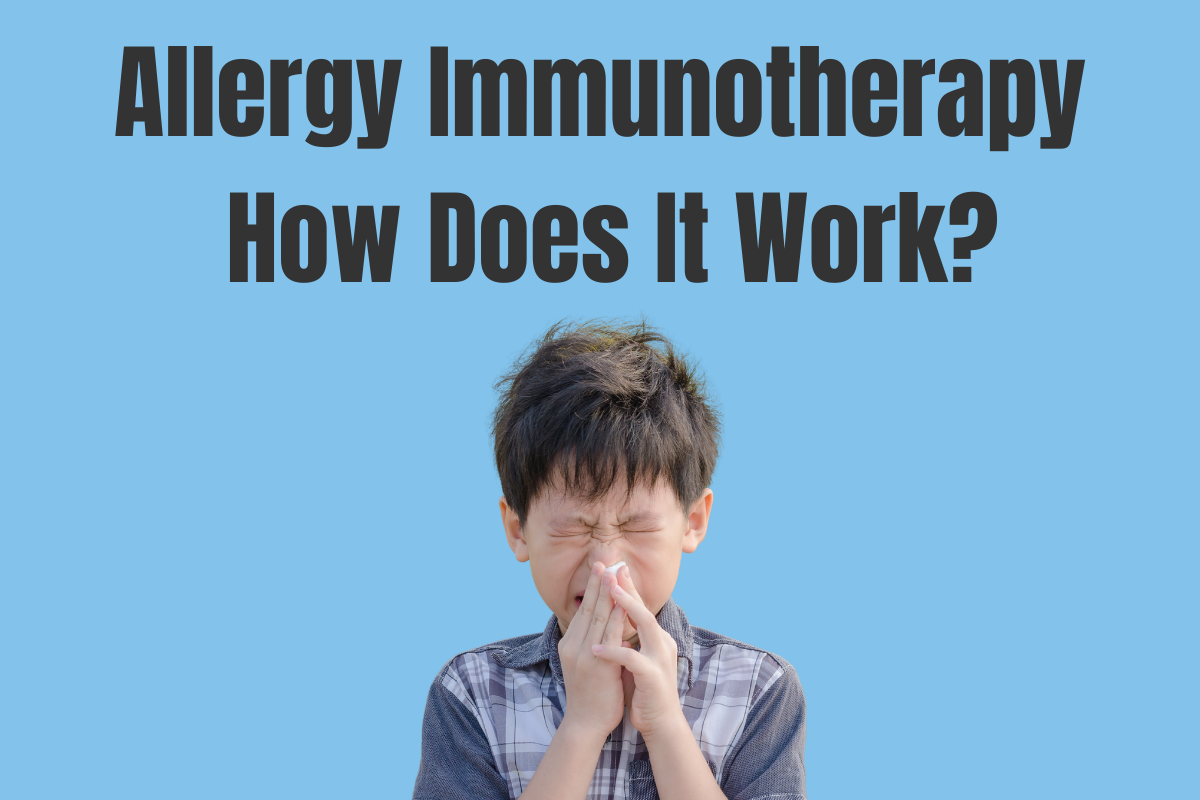Do you have allergies?
If yes, then you know how difficult they can be to deal with…
Some people need to eliminate certain foods in their diet because of their allergies, while others avoid hobbies like camping or mountain climbing because of allergies like pollen or dust.
Some individuals even have allergies so bad that they need to bring medications with them all the time!
Allergies are stressful and keep you from living your life to the fullest. It’s good to know that there might be a way to live with allergies.
What am I talking about?
Allergy Immunotherapy.
If you do not know anything about allergy immunotherapy then let me educate you because this stuff right here is life-changing.
Table of Contents
What is Allergy Immunotherapy?
Allergy immunotherapy is also called allergy desensitization or hyposensitization. It is a method that allows a person to develop a state of tolerance towards the agents that may be causing their allergies or hypersensitivity reactions. (2)
Who discovered Allergy Immunotherapy?

In 1911, Leonard Noon and his co-worker John Freeman in 1911 discovered allergen immunotherapy (1) which is the only medicine known to treat not only the symptoms of allergies but also the cause itself.
They tried the prophylactic subcutaneous inoculation of a grass pollen extract and was found to be successful in suppressing immediate conjunctival sensitivity to grass pollen.
Thankfully, because of the findings of these men, the mechanisms of immunotherapy have started to move forward to discover more novel approaches in the management of allergies and of immunotherapy as a whole.
Who Can Benefit From It?
Individuals with respiratory tract disorders like allergic rhinitis, allergic asthma, rhinosinusitis, and a lot more.
For instance, ocular allergies or those manifesting as symptoms involving the eyes are allergic conjunctivitis, atopic keratoconjunctivitis, and vernal keratoconjunctivitis.
Skin and mucous membrane disorders are also fairly common and may be in the form of allergic contact urticaria, acute urticaria, oral allergy syndrome, and atopic eczema. (3)
The more dangerous ones are those that include anaphylaxis, angioedema, and Stevens-Johnson syndrome (SJS).
Allergy causes can be varied and you can have more than one, which is why if you do not know what causes your allergy, an allergy skin test might be something that you need!
An allergy skin test is important if you have any allergic symptoms and you do not know what is causing them.
It is non-invasive, safe and you get fast results! If you have been suffering from any of the following, then you may need that test, ASAP!
Here are some symptoms that may prompt that you need an allergy skin test:

- Sneezing
- Rhinorrhea
- Constant nasal obstruction
- Itching of the nose or throat when exposed to substances or chemicals
- Itching skin with redness, wheals, and rashes
- Difficulty breathing when exposed to substances or chemical
What Can an Allergy Skin Test Tell me?
An allergy skin test or a patch test can screen up to 70 different types of allergens that you may or may not have. Tests come out in 20 minutes and it’s absolutely safe and uses no needles!
In our clinic we use the AllergiEnd® Allergy Testing. It has been proven to be a test with a high sensitivity of 90% meaning the test can accurately tell if you really have the allergies.
The allergy skin test is important because it is one screening tool that we need to do to know what your specific allergies are and how we can find ways to manage it, and most importantly, use allergy immunotherapy to treat it.
What are my Options for my Allergies?
- Avoid the allergens
The simple solution to your allergies is to avoid them BUT this is easy if you have allergies that are easy to avoid. Things like peanut allergy, shrimp allergy, and other food or drug-related allergy are pretty simple to evade but if your allergies are stuff like pollen, animal dander, molds, mites, and other hard to control objects, then avoidance is tough.
- Take or continue oral medications for your allergens

People with multiple allergies that they cannot control (especially when it involves the environment you live in) manage their symptoms with medications like cetirizine (Rexall or Reactine), levocetirizine (Xyzal, Zyrtec), loratadine (Claritin), and diphenhydramine (Benadryl).
The problem with these medications is that most of them may cause drowsiness or other side effects like fatigue, dizziness, or even dry mouth. There are options to have medications that cause less sedation but having to worry about your allergens and making sure you have medications with you all the time can be a bother.
- Build the immune system
The best solution is allergy immunotherapy. As mentioned earlier, allergy immunotherapy is simply introducing your allergens in a very small amount so that we can build your immune system to your allergens.
This way your immune system overcomes these allergens!
Early doses of allergy immunotherapy are very small, and just enough to stimulate your immune system. This will not make you ill or illicit an exacerbation of your allergies.
As you continue desensitization, your body will gradually need a higher dose. This will help your body get used to the allergen without it overreacting or causing major symptoms.
There are 2 types of allergy immunotherapy, sublingual immunotherapy (SLIT) and subcutaneous immunotherapy (SCIT). We will discuss these two later on.
Who needs Allergy Immunotherapy?
Patients with the following manifestations may need immunotherapy if (4):
- They have moderate-to-severe symptoms of allergic rhinitis
- The cause of allergic rhinitis is unavoidable
- They have allergic asthma and symptoms are hard to control
- They have allergic conjunctivitis
- They have allergic rhino-conjunctivitis
- They have atopic dermatitis
- They have immune-mediated and IgE-mediated food allergy
- They have insect allergy that causes significant local reaction and anaphylaxis
What is sublingual immunotherapy (SLIT)?

SCIT is a non- invasive way to do allergen immunotherapy. It is a method that makes use of the area under the tongue, which is a fast and effective way for medications to be absorbed by the body because it bypasses the first-pass metabolism (metabolism through a specific organ in the body, mostly the liver (5)).
Medication absorbed through the sublingual route gets distributed in the systemic circulation via the blood vessels which is why it can happen as fast as 10 to 15 minutes.
SCIT can be in the form of a dissolvable tablet or a liquid or aqueous extract. It is preferable than subcutaneous immunotherapy because it does not require injections and has a lower risk for anaphylaxis.
This method is also easy for patients to do at home and does not require multiple visits to the doctor’s clinic!
How is sublingual immunotherapy done?
Sublingual immunotherapy using drops or liquid extract is easier and has better compliance amongst patients.
Here is an easy step by step instruction on how SLIT is done:
- Patients are usually advised to take the drops twice daily under the tongue, one in the morning and one in the evening.
Pro Tip: For patients to easily remember that it is time to take the drops, we recommend them to place their drops beside their toothbrush and take the drops after brushing their teeth.
- Once you have the drops under your tongue, make sure to hold it there for at least 2 minutes to allow it to be absorbed into the system before swallowing.
- Do not take any food or drink 15 minutes after you have taken the drops. This will help your body absorb the drops better.
- You may need to take your anti-allergy medications especially on the first few days of starting the drops. This will give your body time to gain resistance to the allergens and minimize symptoms or any untoward effects. As patients begin to take the drops longer, the need to take antihistamines will also lessen.
For SLIT to work as it is supposed to, adherence is very important. Try not to miss a single dose of your drops. A follow-up visit will be scheduled by your doctor after a month of taking these drops and if your immune system is responding well, your dose will be increased to a maintenance dose formula.
Is sublingual immunotherapy safe?
Yes. Sublingual immunotherapy is very safe and side effects are uncommon. Unlike subcutaneous immunotherapy, there are no injections given and you can administer the medication by yourself.
Most adverse reactions are tingling or itching or the mouth area which can be improved by using a Benadryl mouthwash. Do not be afraid when this happens because this is a very minor reaction.
Allergy symptoms like swelling or breathing problems are very rare. If you do have them, remember to take your antihistamines and see your doctor immediately. Do not wait for the symptoms to worsen.
These sublingual immunotherapy medications have been used for more than two decades and are very safe. Even children have used this medication with the supervision of an adult and as per the advice of a health care practitioner.
What is Subcutaneous Immunotherapy (SCIT)?
Unlike SLIT, SCIT is more invasive because it involves an allergen that is injected into the subcutaneous (fatty) area of the skin. It is effective in treating allergies to trees, pollen, dust and insect stings. (6)
It is given by a healthcare provider in a clinic or a setting where there is access to treatment for anaphylaxis and even resuscitation. Although anaphylaxis is a rare occurrence, patients may still have reactions like redness, itchiness or hives when given SCIT which is why SLIT is more convenient for most patients and doctors.
How is SCIT done?
Subcutaneous immunotherapy is pretty straightforward. Your schedule will depend on your doctor. Some doctors may give multiple injections per visit or a set number of visits per week. This schedule will also change once you have reached your maintenance dose.
The most common practice is one to three injections per week in the build-up phase then the maintenance phase where injections are given every two to four weeks over a period of years. Your schedule will be modified based on the severity of your symptoms, your specific allergen, and the preference of your doctor.
Which Treatment is Right for Me?
Research tells us that both SLIT and SCIT show clinical evidence of disease modification and effective treatment especially in patients who have asthma and allergic rhinitis. (7)
Choosing the immunotherapy that will work best for you will depend on a lot of factors. It is important that you discuss details of your allergy exacerbation to your health care providers.
Keep a record of your symptoms and how bad they have become or any new exposures that may have caused a recurrence.
Between the two immunotherapies, both have been effective in reducing symptoms but sublingual immunotherapy remains to be more convenient than subcutaneous immunotherapy.
Since SLIT can be done at home, patients are also more likely to adhere to the schedule of taking the drops than coming in to the clinic to get shots. Especially nowadays with the current pandemic, SLIT offers fewer risks to patients.
Conclusion
Allergies do not need to be the reason why you limit yourself. If you have found yourself in a never-ending battle with your immune system, then maybe immunotherapy is the answer you have been looking for.
If you have more questions or need more information, do not hesitate to leave a comment or scroll back to what we have discussed so far:
Table of Contents
If you are interested and want to know more about allergy testing and immunotherapy, you can contact us or book an appointment with us here.
—
References
- Durham, S. R., & Nelson, H. (2011). Allergen immunotherapy: a centenary celebration. The World Allergy Organization journal, 4(6), 104–106. https://doi.org/10.1097/WOX.0b013e3182218920
- Tanno, L. K., Calderon, M. A., Papadopoulos, N. G., Sanchez-Borges, M., Rosenwasser, L. J., Bousquet, J., Pawankar, R., Sisul, J. C., Cepeda, A. M., Li, J., Muraro, A., Fineman, S., Sublett, J. L., Katelaris, C. H., Chang, Y. S., Moon, H. B., Casale, T., Demoly, P., & Joint Allergy Academies (2016). Revisiting Desensitization and Allergen Immunotherapy Concepts for the International Classification of Diseases (ICD)-11. The journal of allergy and clinical immunology. In practice, 4(4), 643–649. https://doi.org/10.1016/j.jaip.2015.12.022
- Memon RJ, Persaud Y, Savliwala MN. Allergy Desensitization. [Updated 2020 Aug 16]. In: StatPearls [Internet]. Treasure Island (FL): StatPearls Publishing; 2020 Jan-. Available from: https://www.ncbi.nlm.nih.gov/books/NBK535367/
- Smith C. S. (2004). Allergen immunotherapy practice parameter update. The Journal of the Kentucky Medical Association, 102(2), 53–56.
- Herman, T. F., & Santos, C. (2020). First Pass Effect. In StatPearls. StatPearls Publishing.
- Wise, S. K., & Schlosser, R. J. (2012). Subcutaneous and sublingual immunotherapy for allergic rhinitis: what is the evidence?. American journal of rhinology & allergy, 26(1), 18–22. https://doi.org/10.2500/ajra.2012.26.3691
- Nelson H. S. (2014). Subcutaneous immunotherapy versus sublingual immunotherapy: which is more effective?. The journal of allergy and clinical immunology. In practice, 2(2), 144–151. https://doi.org/10.1016/j.jaip.2013.11.018

